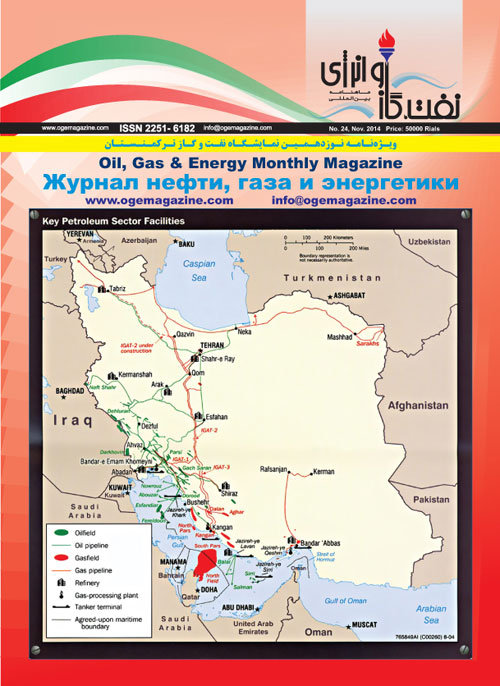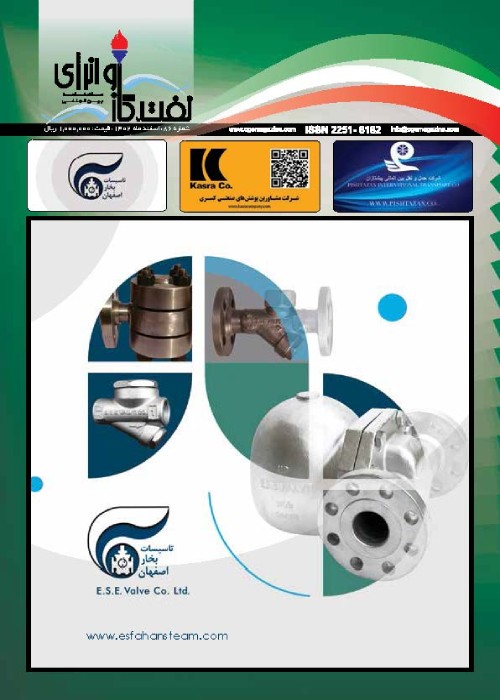فهرست مطالب

ماهنامه نفت، گاز و انرژی
سال پنجم شماره 24 (آبان 1393)
- ویژه نامه نوزدهمین نمایشگاه نفت و گاز ترکمنستان
- تاریخ انتشار: 1393/08/12
- تعداد عناوین: 4
-
Page 2IntroductionPumping systems are widely used in a variety of industrial applications primarily for transferring fluids. They are responsible for about 20% of the world’s electrical energy usage (Yates, 2003), and 25-50% of total electricity usage in some facilities (DOE, 2004). Energy and maintenance cost accounts for 50-95% of life cycle cost of an industrial pumping system (Energy Efficiency Best Practice Guide, 2009). A significant potential for efficiency improvement and energy saving exist both in designing new pumping system and in improving existing pumping system. The highest potential can be achieved by implementing energy saving strategies in the design stage (Cone, 1980). In the following sections some basic guidelines for designing a new pumping system and relevant energy saving potentials will be reviewed.
-
Page 7Consumers try to obtain their electricity demand at minimum cost and risk from different resources in restructured electricity markets. This paper develops an energy procurement model for large consumer with multiple options including distributed generation units (DGs), bilateral contracts and pool market purchase with considering Demand Response Programs (DRP). The paper is focused to study the effect of DRP on total procurement cost, where the time-based demand response programs have been modeled and consequently its influence on load profile and consumer demand has been discussed. Actually a new framework using demand response program is presented for large consumer procurement cost reduction.Keywords: Demand response programs (DRP), Energy procurement, Large consumer, Time, of, Use (TOU) program
-
Page 14Intermittence is one of the main obstacles in wind and solar power penetration. To cope with this problem pumped-storage plant has been proposed as a good complement that can handle positive and negative imbalances. This paper proposes a stochastic model for optimal energy management with the goal of profit maximization and imbalance cost minimization. In this model, the uncertainties related to the forecasted values for available output power of wind and photovoltaic units, market price and imbalance market price are modeled by a scenario-based stochastic programming. In the presented method, scenarios are generated by a roulette wheel mechanism based on probability distribution functions of the input random variables. Then in order to increase the speed of optimization process number of scenarios is reduced in a scenario reduction process. The proposed offering model is compared with disjoint operations of wind, photovoltaic and pumped-storage with satisfactory results and it has verified improvement of joint operation profit.Keywords: Integrated operation, Uncertainty, Pumped, storage plant, Wind farm, Photovoltaic
-
Page 25This paper deals with fitting of the binary interaction parameter for the Peng- Robinson equation of state using landmarks in the binary phase space such as K- and L-points. K- and L-points for the (Ethane + Ethanol) and (Methane + n-Hexane) systems were calculated using different values for the binary interaction parameter and It was observed that the location of K- and L-points varied significantly in P-T space with change in the binary interaction parameter. Additionally, for Ethane + Ethanol system a single value of the binary interaction parameter was not able to predict both K- and L-points well and a single value of binary interaction parameter without a pressure and/or temperature dependence was unable to predict the presence of both the K- and L-points simultaneously. The system exhibits Type-V phase behavior experimentally but The binary interaction parameter fitted using an L-point predicts Type-II phase behavior whereas the binary interaction parameter fitted using a K-point predicts Type-III phase behavior for the system. Not only did the binary interaction parameter fitted using a K- or an L-point fail to predict the correct type of phase behavior. But the results for methane + n-alkane system revealed that the binary interaction parameter fitted using the K- and/or L-point was successful in predicting the correct shape of the critical line and thus the correct type of phase behaviour.Keywords: Binary Interaction, K, Point, L, Point, Phase Diagram


